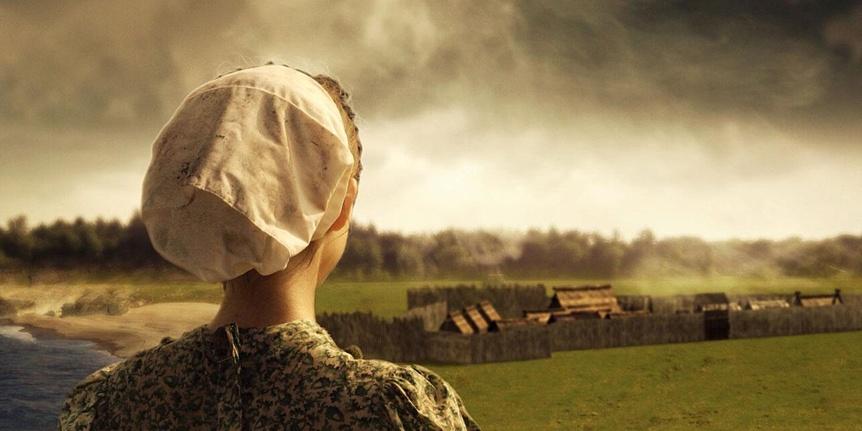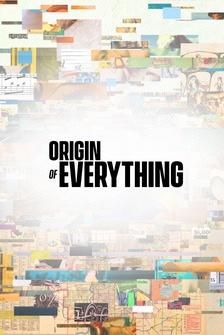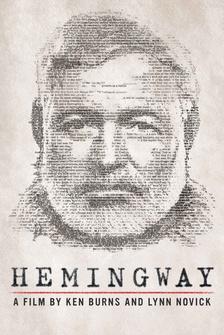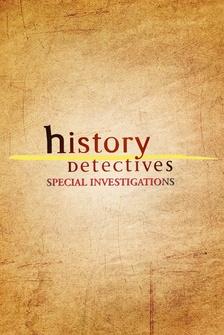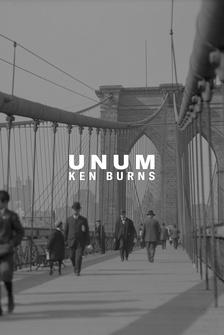-Mosul, Iraq.
More than two-and-a-half thousand years ago, this city -- then known as Nineveh -- was the capital of Assyria, which ruled much of the modern Middle East.
-The Assyrians built the first huge empire in the history of humankind.
-They excelled at science and engineering... revolutionized warfare... and created one of the world's first great libraries.
-In many ways the Assyrians are the beginning of the modern world.
♪♪♪ -But during three years of occupation, the Islamic State -- or Daesh, as it is also known -- destroyed many of the city's Assyrian treasures.
♪♪♪ Now, archaeology is fighting back.
-It's amazing because, at first, we thought that here would be nothing.
-Daesh wreaked destruction... ...but what remains is revealing the most complete picture of ancient Nineveh ever.
-The tunnels are going in all direction.
You know, here's a tunnel, there's a tunnel.
-Archeologists are unearthing new discoveries... ♪♪♪ ...reconstructing the city's past... -A lot of pieces, one million, two million.
We have a lot of pieces.
-...and investigating an ancient mystery.
Could Nineveh be the home to a lost Wonder of the World?
The Hanging Gardens of Babylon.
-World Wonders have got to say "Oh, wow!"
to anybody who comes to visit.
-Ahh, here it comes.
So awesome.
Everything is possible now.
♪♪♪ ♪♪♪ ♪♪♪ -Mosul, Iraq's second-largest city, with a population of nearly two million people.
♪♪♪ Situated 200 miles north of the Iraqi capital, Baghdad, Mosul is home to the ruins of an ancient city called Nineveh.
♪♪♪ Once, this was the greatest city on Earth... and the capital of the mighty Assyrians.
♪♪♪ In the 7th century BCE, hundreds of years before the rise of the Romans, the Assyrians ruled over the largest empire the world had ever seen... ...stretching from the Mediterranean in the west to Iran in the east, and from Egypt in the south to Turkey in the north.
♪♪♪ Nineveh was home to 120,000 people, making it the largest city in the world.
♪♪♪ Today, many of Nineveh's ancient treasures are held at the Mosul Cultural Museum.
Zaid Saadallah is the museum's director.
Zaid is spearheading a monumental rescue mission.
♪♪♪ He wants to piece together the story of an empire that, in recent years, was almost erased from history.
♪♪♪ In 2014, Daesh, a violent group fighting for a global caliphate, swept into the city.
♪♪♪ Daesh terrorized the city and targeted Zaid's museum.
♪♪♪ The Assyrians lived centuries before Islam was founded... ...so these fundamentalist terrorists consider Assyrian gods to be blasphemous.
♪♪♪ ♪♪♪ The destruction shown in these propaganda videos caused outrage around the world.
♪♪♪ In a matter of hours, Daesh demolished priceless statues and artifacts.
And what they didn't smash, they sold on the black market to fund their campaign.
The insurgents were finally forced from Mosul in 2017... leaving Iraqi archeologists to deal with what remained.
♪♪♪ ♪♪♪ Zaid is determined Daesh won't have the last word and has brought in an international team of experts to assist him.
-Piece 46.
Let's try that.
-36?
-46.
-Stefan Maul is an Assyriologist from Heidelberg University in Germany.
-Yes, goes together so it's not too bad.
-He is one of the few people in the world who can read cuneiform, an ancient system of writing.
-Daesh wanted to destroy the cultural identity of this country.
This is inacceptable.
And we have to give that back this country and to the people.
-Stefan is doing more than just reconstructing the past.
He is also leading the excavation of another area Daesh targeted.
♪♪♪ ♪♪♪ 5:00 AM.
Stefan's team is on the move.
-Now, we are driving outside the city of ancient Nineveh here and these are the remains of the Assyrian city wall.
♪♪♪ -Their destination is a hill named Tell Nebi Yunus.
It is the location of one of the largest archeological finds in the history of Iraq.
-We are in the inner court of the mosque of Jonah in Mosul, which used to be one of the very, very famous Islamic pilgrimage sites.
-Until recently, this mosque housed the tomb of the prophet Jonah.
-In 2014, when Daesh conquered Mosul, in their fundamental view of Islamic theology, it is forbidden to pray in front of a grave of a human being.
So they simply blew up the mosque.
♪♪♪ And when I came first in this place here, there were six meters of debris here beneath the rest of the minaret, six meters.
We had to bring the debris out, but you can't do that with an excavator because there's a danger that explosives would still be in the debris.
We found a barrel filled with dynamite, which didn't explode.
So it was really dangerous.
It was so dangerous.
♪♪♪ ♪♪♪ -But beneath the rubble, the team made a remarkable discovery.
-We discovered 650 meters of tunnels beneath the mosque.
The tunnels are going in all directions, you know, here's a tunnel, there's a tunnel.
Here is the next one.
The underground is like a cheese from Switzerland, you know, full, full, full, full of holes.
Daesh didn't use machinery.
They did it with pickaxes.
See here is scratches of the pickaxe.
So it must have been a huge amount of workers here in the tunnels, and people from the neighborhood told us that ordinary people on the street were forced to come here and to work.
♪♪♪ -Why did Daesh dig this vast network of tunnels?
Their motivation had been hidden under the mosque for centuries.
♪♪♪ -Daesh, as everybody else in the city knew, that under the mosque were the ruins of an Assyrian palace.
The palace was untouched because it was sealed by the mosque, which was above it.
♪♪♪ -This palace was the headquarters of Assyria's feared army, the source of the empire's power.
Between the years 705 and 631 BCE, three warrior kings -- Sennacherib, his son Esarhaddon, and grandson Ashurbanipal -- transformed Nineveh into the most powerful city in the world.
-Assyrians were very aggressive.
Warfare was part of the everyday life and an important part of Assyrian economy.
So they did more or less every year a campaign, they fought and made sieges, and if they could capture a city, the city was quite often looted.
-The Assyrians stored their spoils of war in Nebi Yunus, where they remained untouched for more than 2,000 years.
But this made the palace a prime target for Daesh to loot.
-Daesh wanted to discover antiquities and to sell them on the black market in order to finance their war.
-Stefan's team has found stunning Assyrian artifacts -- Egyptian gold from the time of the pharaohs... ...and some of the only carvings depicting Assyrian women ever unearthed... ...along with a vast number of cuneiform inscriptions.
-You still can read the name of the king who built the palace.
This sign means, "Palace of Sin-ahhi-eriba, Sanherib, King of the World."
♪♪♪ -The team worries about how much Daesh has stolen.
-Daesh will have found important things, but they are lost, you know.
They sold them on the black market.
♪♪♪ -But these tunnels led to one of the most important discoveries in Iraqi archaeology.
♪♪♪ -Zehn Zentimeter.
-Zehn Zentimeter.
-We measured the whole tunnel system with GPS points and made 3-D models of the whole tunnel system.
♪♪♪ -In 2022, the team painstakingly mapped the labyrinth of underground passages.
Tracing the course of Nebi Yunus's walls provided a three-dimensional model of a palace that had lain hidden for thousands of years.
The effort has revealed an enormous, sprawling complex designed to demonstrate the power of the king.
-In the Assyrian society, military formed a society in the society, and loyalty to the king was a very important thing.
So the king had to present himself.
He had to live together with his soldiers in a certain way, and with his generals and officers.
-The team's reconstruction shows that one palace room is more than 150 feet long and almost 60 feet wide, making it the largest room ever discovered in the empire.
It was the throne room -- its entrances adorned with grand, symbolic statues called lamassu, or "winged bulls."
♪♪♪ -We are standing in front of a pair of winged bulls.
This is an entrance giving access to the throne room, which is just behind us.
And these winged bulls are meant to protect the king.
They have a certain magical power, you know?
♪♪♪ They are partly a bull, but you see feathers here.
So they are bulls with wings, but they had human heads.
-Once, these sacred icons were found all across Mosul.
-In the city gate, in the Nergal Gate, for example you had three pairs of such winged bulls.
-But just like the statues in the Mosul Museum, their religious symbolism made them a target for Daesh.
♪♪♪ -They were completely destroyed by Daesh.
There's nothing, almost nothing left.
They completely destroyed them.
I couldn't look at that.
It's so horrible.
I turned it off.
Started to cry.
But here under the earth, they left them more or less untouched.
I don't know why, which is good luck for us.
Well, they are badly damaged, but they still exist.
Daesh wanted to destroy the identity, the cultural identity of this country.
-But their attempt to erase the Assyrians from history has failed.
♪♪♪ Discoveries made at Nebi Yunus have provided the most complete picture of Assyrian culture ever assembled and are now offering new insights into Nineveh's rise to become the most powerful city in the ancient world.
♪♪♪ One of the city's rulers, Sennacherib, could hold the key to an enduring mystery.,, ...the location of a true lost Wonder of the World -- the Hanging Gardens of Babylon.
♪♪♪ The trail of clues begins 30 miles northwest of the city... ♪♪♪ ...where the plains give way to a ridge of hills.
Kurdish archaeologist Bekas Hasan has spent nearly 20 years searching for hidden remains of the Assyrian Empire.
♪♪♪ And he has made a breakthrough, unearthing a series of elaborate Assyrian carvings.
♪♪♪ Assyrians erected this style of relief in locations that were significant to them.
But why here, so far from Nineveh?
The answer -- water, the lifeblood of any city.
-This narrow canal had smaller waterways branching off and was part of a massive engineering project that extended over 11 square miles.
And when Bekas surveyed this channel, what he found surprised him.
♪♪♪ With such precise engineering, the Assyrians were able to maintain a constant supply of water for the entire region.
♪♪♪ And this was just part of a network of channels and waterways nearly 250 miles long that brought water from the Zagros Mountains and ultimately to Sennacherib's capital, Nineveh.
♪♪♪ ♪♪♪ Another icon of ancient engineering lies 25 miles north of the city... ♪♪♪ ...a demonstration of technological advancement.
♪♪♪ ♪♪♪ -Measuring nearly 1,000 feet long and 70 feet wide, this site was initially believed to be a large Assyrian bridge.
But cuneiform writing revealed its true purpose.
♪♪♪ Originally topped with a layer of waterproof cement, this is the oldest known aqueduct in the world, predating the first Roman example by more than 400 years.
♪♪♪ Assyrian ingenuity provided Nineveh with a regular supply of fresh water even in the long, hot summer months.
Sennacherib used the water to transform his capital city into an oasis.
The water supply would likely have also been vital in the creation of the ancient Wonder of the World.
-If you came into Nineveh as a visitor, I think you would see these fantastic palaces with winged bulls.
But you'd also see a garden city and even on the Citadel there were gardens, and then outside in the main part of the city, there were gardens.
It must have been a lovely sight.
-Stephanie Dalley is an Assyriologist with a revolutionary theory.
Could a garden Sennacherib built next to his palace in Nineveh be a Wonder of the World?
Could it be the long-lost Hanging Gardens of Babylon?
Stephanie bases her theory on Sennacherib's feat of bringing vast amounts of water to his capital... ...as well as the king's own written descriptions of his garden, recorded on a clay prism, which she has decoded.
♪♪♪ -So he says, "To be an object of wonder for all of the people, I raised the surroundings of the palace.
I called it 'The Palace Unrivaled.'
I planted alongside it a garden, a replica of Mount Amanus, which has all kinds of aromatic plants and fruit trees -- trees that are the mainstay of the mountains."
-This account does match written descriptions of the Hanging Gardens.
Archeologists have never found remains of the garden in Babylon, but have they been looking in the wrong place?
♪♪♪ During Sennacherib's reign, the Assyrians did rule the city of Babylon, more than 300 miles south of Nineveh.
♪♪♪ The descriptions of the Hanging Gardens were written by Greeks who never visited Babylon.
Is it possible those writers simply confused the cities?
♪♪♪ Stephanie has found a relief from Nineveh which shows a lush garden right next to Sennacherib's palace.
-We've clearly got something on a hill, on a slope, and the water is coming down in little streams and it's ending up at the bottom in a little lake.
So what it also shows is the different layers of garden there, and there and there and there.
-The king's aqueduct brought water to his capital, and Stephanie has found written evidence that he had a system to carry water to the top of the garden.
-"By divine will, I created clay molds of tree trunks and date palms, the tree of abundance, and then I poured copper into it."
It's clear if you look at the trunk of a palm that it has got this spiral pattern on it.
-Sennacherib could be describing an Archimedes screw, a proven way of moving water uphill.
-You put the bottom end in a cistern of water and then you rotate the screw.
It spouts out the other end very easily.
It's wonderful.
-Water screws would have allowed Sennacherib to maintain a lush, tiered garden right next to his palace in Nineveh.
Using the evidence she's gathered, Stephanie has designed an artist's impression of how this spectacle might have looked.
♪♪♪ -World Wonders have got to be fantastic.
They've got to say "Oh, wow!"
to anybody who comes to visit.
And, in my opinion, this does, and it is based on quite a good assembly of evidence.
-Archeologists have yet to excavate the area where Stephanie thinks Sennacherib built his garden.
♪♪♪ ♪♪♪ But the refinement of Nineveh's reliefs shows the importance Assyrians placed on beauty.
♪♪♪ A "Wonder of the World" would be in keeping with Sennacherib's ambitions for the empire.
He encircled Nineveh with a wall more than seven miles long.
And one of his city's grand entrances was the Mashki Gate.
♪♪♪ Here, archeologists led by Fadhel Mohammed have made a discovery, which may cast new light on this legendary king.
The Mashki Gate was reconstructed in the 1970s.
But in 2015, Daesh reduced it to ruins.
♪♪♪ After the team cleared the rubble, they found the tops of some previously hidden stones.
When Fadhel dug up the ancient floor, he found a lost Assyrian treasure.
The bottoms of the slabs were covered in carvings.
Buried underground, they had been protected from Daesh's attack.
Fadhel recognized the style of these decorations.
The carvings from his palace are among the most celebrated pieces of Assyrian art.
Experts had long known that this series of reliefs was incomplete, and assumed the missing panels were lost forever.
Fadhel hopes these reliefs will reveal new details about Sennacherib.
And he is trying to work out why they were moved from the King's Palace to the Mashki Gate.
One theory is that the slabs were recycled to strengthen the gate in case of enemy attack.
These new discoveries illustrate that Sennacherib's influence on Nineveh is undeniable.
And to the north lie ruins belonging to another of the city's powerful rulers... ♪♪♪ ...one of Sennacherib's heirs, a king who ruled Assyria for 38 years, his grandson, Ashurbanipal.
-So, what you see here, so this very flat, smooth surface, this is the floor of Ashurbanipal's Palace.
-Aaron Schmitt has been working in Mosul for four years.
-So that was the throne room of the palace.
So the main room of this whole building.
-Once, these walls were decorated with art celebrating the king's love of hunting lions and the ruthlessness of his reign.
One relief showed him hanging the head of a defeated enemy from a tree like a garden decoration.
♪♪♪ The palace has been excavated many times since it was found 170 years ago.
But the ruins are so large, there are always new secrets to uncover.
-And then we made a very exciting discovery, so I will clean this quickly.
What comes up is something that really surprised us because it's the first time we find this in an Assyrian palace.
What we see is the head of an Assyrian god.
-This is the first time archeologists have found an image of a major god inside an Assyrian palace.
-There is soil on top of the stone slab.
Oh, look.
Hah.
♪♪♪ I think it's the finger of the king.
Like he should -- So this is how the Assyrians pray, in front of their god, and it could really be his finger.
So, yeah.
Oh, my God.
This is so exciting.
Let's see.
Ah!
[ Laughter ] -Well, this is awesome.
-Oh, it's his hand for sure.
For sure.
Oh, he so -- Yeah, yeah, yeah, yeah.
Ahh, here it comes.
Yeah.
Yeah.
Look, here's his nose.
Oh, my God.
Look, here is -- it's his mouth.
-Oh, this is so cool.
-Images of Ashurbanipal as a king are very rare, and this is the largest ever found.
-So here is his nose, here is lips, so his mouth.
Here's his eye.
This is his... what he wears on his head.
And then here his hand and he's holding some kind of object.
You excavate for more than 20 years and basically you find only pottery and walls.
We learned about this stuff, like, for many years but it was not in vain.
Oh, my God, it's...
It's so awesome.
[ Laughs ] ♪♪♪ -This is the latest in a long line of remarkable discoveries made at this palace complex.
Here, archeologists found one of the crowning achievements of Assyrian culture -- the Library of Ashurbanipal.
♪♪♪ A collection of more than 30,000 tablets that chronicled all known human knowledge.
Literary epics, scientific theories, and the laws Ashurbanipal used to control his empire.
Across Nineveh, archeologists are gaining a better understanding of this beguiling city, the capital of one of the world's first great empires.
But there is a mystery.
Nineveh grew from a provincial town to being the largest city in the world in less than 70 years.
How did it grow so quickly?
How did the Assyrians expand their empire and build aqueducts?
Mark Altaweel is a professor of archeological data science.
He believes that newcomers to Assyria were the key and is looking for clues in Assyrian art.
-A lot of the reliefs show the kind of violence one expects from the Assyrian Empire.
But the ones I find most fascinating are the ones that deal with what happens after warfare.
They show people being transported from cities they conquered.
-These are not prisoners or slaves, but people who were invited to join the Assyrians and enabled Nineveh to grow and prosper.
-People who had skills, skills in the arts, skills in engineering, so they can bring them back to their empire and benefit from them.
-Mark's theory is that this influx of new blood allowed Nineveh to expand.
Now, he's using science to test this idea.
-DNA was always the missing piece of the puzzle for me.
You have genetics that are more common to certain regions, certain traits like blue eyes or blond hair or those kinds of things that we can see in a physical sense are more common in certain populations.
And over time that may change because of migration and things.
So that's something we can study, we can look at, see how long it takes for certain populations to become more similar.
♪♪♪ 20 miles southeast of Mosul lies the royal city of Nimrud... ♪♪♪ ...where kings escaped Nineveh to spend time with their families.
Here, in an ancient well, archeologists made a macabre discovery.
-Well over 100 individuals seem to have been thrown in this well, perhaps over 150 even.
♪♪♪ -These remains give Mark an opportunity to test his theory.
-These bones all came from one well.
What is called Well 4, in Northwest Palace in Nimrud.
Well Four was known for quite a long time.
It's very deep.
But the Iraqis back in 1990, 1991, sent someone to excavate this well.
So he went down this well and found all these bones and they were pulling out bone after bone, bone after bone.
A lot of them were actually together.
In fact, a lot of them were handcuffed still.
So clearly, these individuals in many cases were handcuffed and thrown in there.
-This is by far the largest cache of Assyrian bones ever found.
And they offer Mark a rare chance to investigate the empire's genetic history.
-We have been taking DNA from the petrous bone.
Think of it as a bone in the side by your ear.
It has a high concentration of DNA, and it seems to preserve better there.
-Mark has analyzed the genetic code of 53 people found in the well and identified where each of the individual's ancestors came from.
If his theory is correct, he should see matches from the different countries the Assyrians conquered.
He finds markers from North Africa, central Turkey, the Caucasus, the Levant, Iran, and Arabia, areas that became part of the Assyrian Empire, and a clear confirmation of Mark's theory.
-I think that for me has always been the missing puzzle.
We can see it in many ways in the culture and languages and in various aspects, but ultimately genetics gives you that final piece of evidence that makes you feel confidence in believing what you think is true.
-Mass influxes of skilled people participated in the expansion of the Assyrian Empire's engineering marvels and made Nineveh the most powerful city in the world.
♪♪♪ But archeologists are still trying to solve one enduring riddle of this ancient metropolis -- its fall.
Records say the Babylonians and their allies sacked Nineveh in 612 BCE, but it's not clear what took place.
Some accounts say the attackers set the city on fire.
Others, that they flooded it.
What really happened to Nineveh?
Could the answer lie in the palace at Nebi Yunus?
♪♪♪ Stefan Maul and his team are investigating an unexplored area of the complex.
A second tunnel network carved by Daesh in their hunt for loot.
-We found another tunnel system, which has several hundred meters, perhaps even a kilometer.
-Deep in the labyrinth, Stefan finds broken pottery embedded in the walls.
-These are huge jars.
This was a storage for wine, for cereals and other things which were needed in the palace.
The floor might have been on this level, so the jars were in the wall.
-As Stefan goes deeper, he finds a potential clue to Nineveh's demise.
-When you look carefully you see, all over here in the fill, pieces of charcoal.
And on the floor, the ashes everywhere.
Even on the ceiling.
-Clear evidence that a fire did sweep through the royal complex... -Pieces of charcoal.
-...and caused the palace's collapse.
-The mud brick walls, when this palace burnt, broke together and they smashed the jars which were standing on the floor.
This evidence is physically there, as you see, you see these, these pieces of charcoal everywhere in this debris, which fell down when the palace was burnt down.
-The team has found physical evidence suggesting the Babylonians set Nineveh alight.
But if this is how the attackers sacked the city, there should be signs in other parts of Nineveh.
The Nergal Gate lies on the north side of the city.
It was one of the main entrances to Nineveh, making it another prime target for attacking forces.
Could this site hold more clues about the city's fate?
-Yeah, I mean we have some fireplace there.
So they were living here.
Then we have a pottery vessel broken there.
-Archaeologist Alana Birsens has unearthed some vital evidence.
-Some more bricks here, here are some charcoal concentration over here.
That's interesting that we have charcoal all over the place.
-Just as in Nebi Yunus, there are signs of a large fire.
And nearby, the team has made a gruesome discovery.
-This is a skeleton of an adult person that is lying on the belly in extended position.
Here's pieces of the leg that remain.
This is a femur.
We see back of it.
Here I can see the back of the spine.
So there's no other way that he has to lie on the belly.
So he's, like, in this position, probably trying to support during the fall means that person was still living in that moment.
-These details are consistent with someone being pinned under a falling object, like a wall.
And the bones themselves hold a further clue.
-We can see changes on the bones due to burning, like, the knee over here was burned.
It's the same with the leg, with the head, the elbows.
-At sites across Nineveh, researchers are finding the same thing -- evidence of fire and building collapse, consistent with the Babylonians burning the city.
-It's amazing because at first, we thought that here would be nothing.
You've always got to keep digging, of course.
-In Nineveh, archeologists continue to make discoveries, enriching our knowledge of the ancient Assyrians.
♪♪♪ And at the Mosul Museum, experts are making strides in reconstructing the objects destroyed by Daesh.
-We have a lot of pieces, one million, two million, I think.
Yeah.
-Taha Yasin al-Sarraj is repairing an engraved stone monument known as the Banquet Stele.
-We have a lot of pieces.
That is a challenge.
-So, what you see is a stele which had been made by an Assyrian king.
He invited 69,574 people for a 10 days festival.
He gives a detailed list of the food which was served for the celebration.
From a scholarly point of view, this is not so interesting because we know the inscription, but Daesh shouldn't have the last word.
-Across Mosul, archeologists are fighting back.
Daesh tried to erase the Assyrians from history, but each find is shining new light on this ancient empire, showing the world that Nineveh was an enlightened city of engineering and the arts... -This is a place that celebrates knowledge and culture.
I think it's important for Mosul to reclaim that, to show the world that they are much better than what was here before.
-...and possibly the true location of the fabled Hanging Gardens of Babylon.
-It's just spectacular.
Yeah.
Everything's possible now.
♪♪♪

